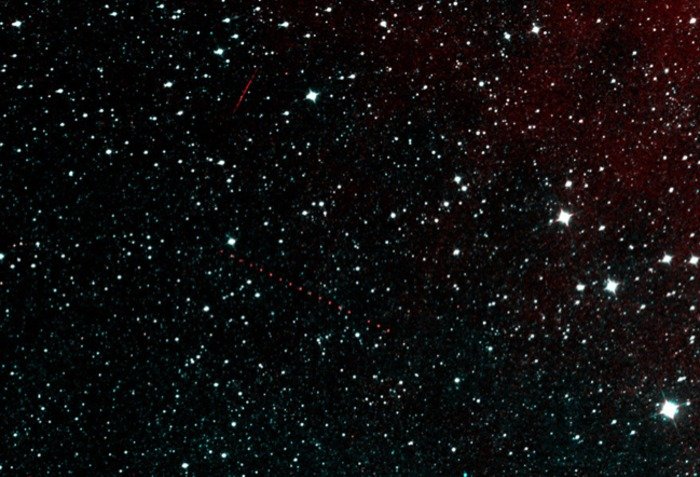This image of a patch of sky in the constellation Pisces is among the first taken by the revived spacecraft's infrared cameras.. Appearing as a string of red dots, an asteroid can be seen in a series of exposures captured by the spacecraft. Credit: NASA/JPL
PASADENA, Calif., Dec. 19 (UPI) -- NASA says an asteroid-hunting spacecraft reactivated after a two-year slumber has returned its first new images of candidates for possible exploration.
The Near-Earth Object Wide-field Infrared Survey Explorer, a spacecraft that made the most comprehensive survey to date of asteroids and comets, has returned its first set of test images in preparation for a renewed mission, the space agency reported Thursday.
Discoverer of more than 34,000 asteroids throughout the solar system during its prime mission in 2010 and early 2011, NEOWISE was reactivated in September following 31 months in hibernation, to assist NASA's efforts to identify the population of potentially hazardous near-Earth objects.
The spacecraft uses a 16-inch telescope and infrared cameras to seek out and discover unknown NEOs.
NEOWISE also can assist in characterizing previously detected asteroids as potential targets for future exploration missions, NASA scientists said.
"NEOWISE not only gives us a better understanding of the asteroids and comets we study directly, but it will help us refine our concepts and mission operation plans for future, space-based near-Earth object cataloging missions," said Amy Mainzer, principal investigator for NEOWISE at NASA's Jet Propulsion Laboratory in Pasadena, Calif.
"The spacecraft is in excellent health, and the new images look just as good as they were before hibernation."















